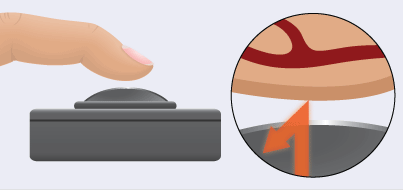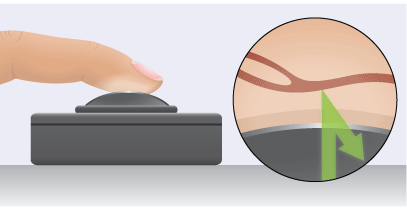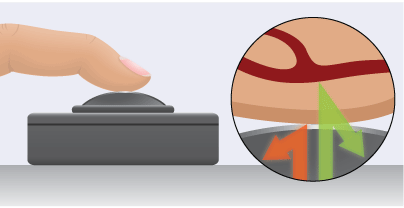Hydration | In Depth
How could my child become dehydrated?
The most common cause is an illness during which your child is vomiting or has diarrhea. But during warmer months, if your child is playing for long periods of time in high temperatures, under direct sun, or in high humidity without drinking enough fluids, he or she is also at risk.
Are children at greater risk for dehydration than adults?
Yes, they are at greater risk due to the fact that the surface area of a child's body makes up a larger proportion of his or her weight.
-
This gives him or her more area on which to be exposed to heat and from which to lose sweat.
-
Also, previous dehydration issues, obesity and a recent illness are additional risk factors.
-
Children who are in poor physical shape, not used to heat, or using antihistamines or diuretics are also at increased risk for dehydration.
What are the symptoms of dehydration?
When a child is dehydrated, the body is not able to perform all of its necessary functions. The more severe the dehydration, the more difficult it is for the body.
Thirst is frequently the earliest symptom, and can occur with only very mild dehydration.
- fatigue
- dry lips and tongue
- dark urine color
- decrease in urination
- feeling of being overheated
Many people don't know this, but dehydration is cumulative. If your child is dehydrated on day one and does not properly re-hydrate, he or she is starting off day two already dehydrated. This effect can lead to more serious dehydration.
As long as fluids are re-introduced in a timely fashion, this is easily reversible.
What are the other harmful effects of heat exposure?
-
Heat cramps in the abdominal muscles, arms and legs are the least serious effect of prolonged exposure to high environmental temperatures.
-
Heat exhaustion is more serious, and can cause dizziness, nausea, headaches, vomiting, weakness, muscle pain and sometimes loss of consciousness.
-
Heat stroke is the most serious consequence of excessive exposure to high ambient temperatures. The body temperature will be 104 degrees Fahrenheit or higher, and the person may experience nausea, vomiting, seizures, disorientation or delirium, a lack of sweating and shortness of breath. In some cases, he or she may become unconscious or even go into a coma.
Is it possible to be over-hydrated?
Over-hydration, which is called hyponatremia, can occur, but it is not a large risk. With stories of over-hydration related to marathon running in the news, people are so worried about it that they overcompensate in the other direction and don't drink enough. This can lead to dehydration. The key lies in moderation.
What are the symptoms of hyponatremia?
Symptoms of over-hydration are often non-specific. There is even some overlap with symptoms of dehydration.
- Early signs include nausea and general malaise.
- As the condition worsens, altered mental status and excessive vomiting can occur.
- The decrease in blood sodium levels, due to excess fluid, may lead to brain swelling, seizures, coma and death.
If you think you or your child is over-hydrated, seek medical attention.
Who is at risk for hyponatremia?
People who drink large amounts of fluid very frequently during prolonged exercise (about four hours or more) are at greatest risk. Smaller people also appear to be at greater risk of hyponatremia.
Hyponatremia is rare in young kids. Teenagers who play sports often have day-long practices in the summer, and they should be careful to drink the proper amount of water. Coaches today are fairly aware of over-hydration and dehydration problems, and will keep fluid intake in check.
How can I prevent over-hydration?
- Drink a few ounces of fluids every hour or so, or when thirsty.
- If you are drinking every 10 minutes, you are probably drinking too much.
- If you're drinking only every few hours, you are at risk for dehydration.
It's all about moderation.
While sports drinks contain electrolytes that can help replenish the body's sodium levels, in general, they are not protective against hyponatremia. This is a common misconception that athletes should know.
Hydration | Research
Problem: During his daily routine, Vassilios Bezzerides, MD, a clinical fellow in the Cardiovascular Program at Children’s Hospital Boston, noticed that it’s often difficult to determine whether a patient is properly hydrated. Measuring electrolytes or other markers in blood or urine can provide a good gauge, but they involve cumbersome sample collection and can produce false alarms. There’s a quick noninvasive method: placing gentle pressure on the fingernail until it turns white, then timing how long it takes for the finger to regain color, indicating the capillary refill time. But this test is crude and its interpretation highly subjective.
Innovative solution: Late one night, Dr. Bezzerides was checking on a sleeping patient. Not wanting to disturb the patient by turning on the overhead light, he instead observed the color change in the patient’s finger using a tricolor LED flashlight. He noticed that the color in the finger was completely washed out by the white light — the finger seemed to disappear, but slowly reappeared as blood flowed back into the capillaries.
He realized that one of the wavelengths making up the white LED was being absorbed, and that he might be able to image the capillary blood with a bedside tool that took advantage of this phenomenon. So he made a device that put pressure on the patient’s finger, then captured the reflection from appropriate wavelengths of light, maybe he could measure capillary refill time in a quantitative fashion, with an actual number readout.
The three stages: before, during and after pressure is applied.



The arrows indicate emitted light and reflectance based on the pigment in the finger.
-
Before pressure is applied, the device measures the reflectance of the light when the capillaries are full.
-
At the site of the pressure, there is a distinct color change in the skin causing the emitted light to have a different reflectance pattern.
-
As the blood flows back in the capillaries, the detector identifies a return to the original reflectance pattern, indicating that the capillaries have refilled with blood.
Implications: His device will have applications not only in the hospital, but also at the bedsides of assisted living patients, and among athletes, who can measure their hydration on the go and optimize fluid intake during rigorous activity. Most important, this test could be used in developing countries with a high incidence of dehydration caused by gastrointestinal infections, especially among children. A hydration device could effectively triage patients, allowing limited staff to focus on those who need immediate attention.
Hydration | Contact Us
Children's Hospital Primary Care Center
| Location | Address | Contact |
| Boston | Boston Children's Hospital 300 Longwood Avenue Boston, MA 02215 |
617-355-7701 fax: 617-730-0505 |
Injury Prevention Program
| Location | Address | Contact |
| Boston | Boston Children's Hospital 300 Longwood Avenue BK 120 Boston, MA 02215 |
617-919-3071 |


